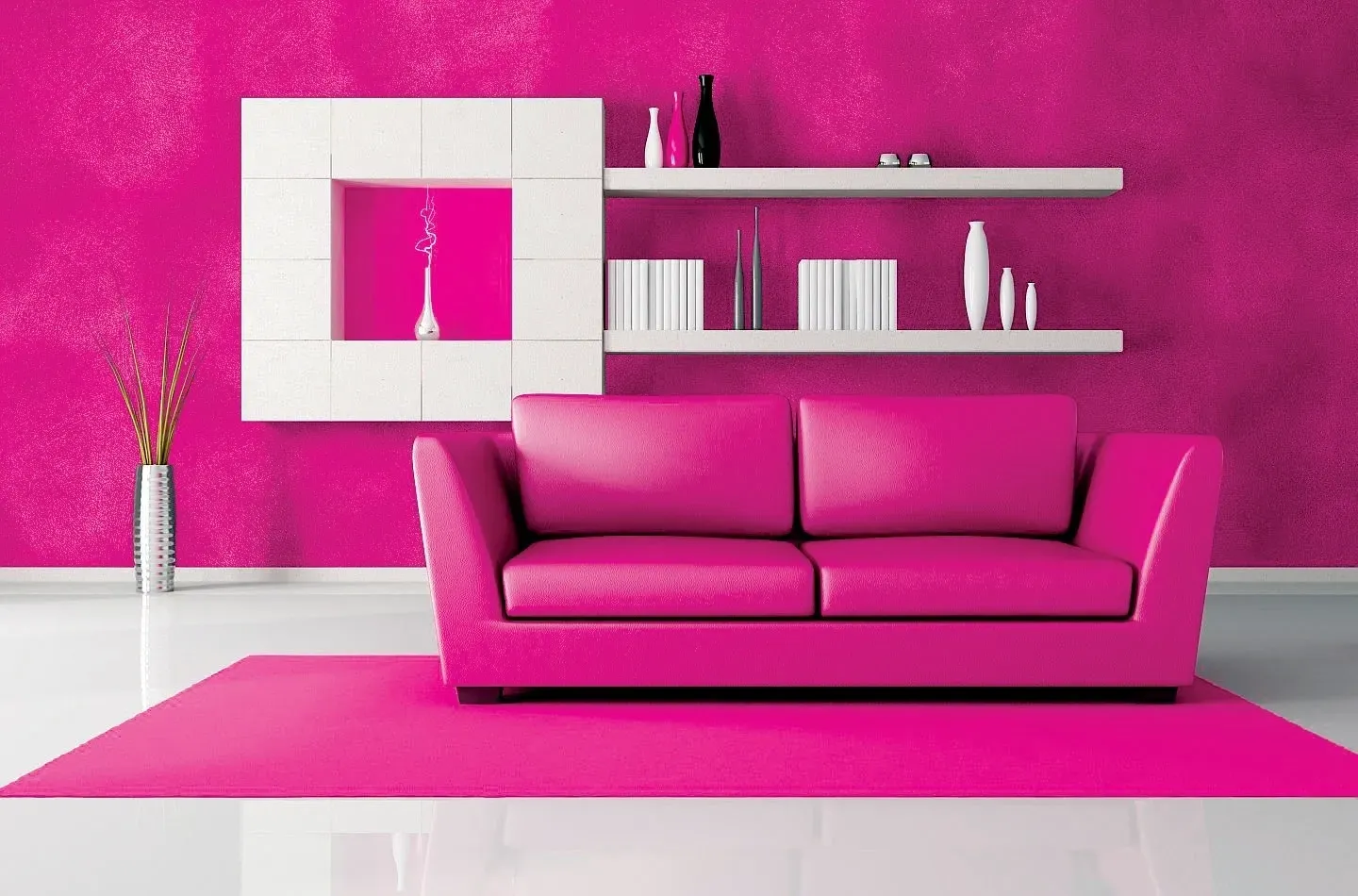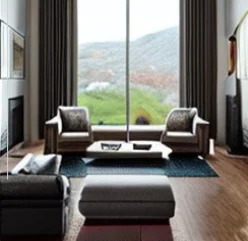The Art of Furniture Arrangement
Furniture arrangement is an art that has evolved over centuries, reflecting the changing lifestyles, cultural values, and design trends of different eras. From ancient civilizations to modern times, furniture placement in our living spaces has played a significant role in creating harmony, functionality, and aesthetic appeal.
That being said, the art of furniture placement is critical to creating a well-designed and functional space. A well-arranged room looks aesthetically pleasing and promotes comfort, ease of movement, and functionality. When arranging furniture, it is essential to consider the size and shape of the room, the purpose of the space, and the number of people who will be using it.
Furniture placement can create a hierarchy of functions in a room and define various zones for different activities. Proper furniture arrangement can also enhance natural light, minimize traffic flow, and create a harmonious balance between function and form. Ultimately, the art of furniture arrangement can transform a space into a welcoming, inviting, and functional area that meets the specific needs of its users.
 |
| Furniture arrangement is essential in the interior design concept to create a harmonious and inviting living space. Image by img1.wsimg.com |
Welcome, homeowners, to a journey that will unveil the magic of furniture arrangement! We will explore the fascinating history and emergence of this design concept that can transform a space from ordinary to extraordinary. Whether you live in a cozy apartment or a spacious house, the art of furniture arrangement holds the key to unlocking the hidden potential of your environment. Also, we will learn about the secrets of creating a harmonious and inviting living space.
In this blog post, we will delve into the fascinating history and emergence of furniture arrangement, exploring its evolution and the principles that guide it today.
A Glimpse into Furniture History
Furniture positioning has been an integral part of human civilization since ancient times. From the nomadic tribes' rudimentary arrangements of skins and bones to the opulent furniture arrangements of royal palaces, this art form has evolved alongside human progress.
In ancient Egypt, for instance, furniture placement was not only functional but also symbolic, reflecting the hierarchy and social standing of individuals within the society.
During the Renaissance period, furniture became more ornate and multifunctional. Rooms were organized to accommodate specific activities like dining, socializing, and sleeping. The concept of symmetry gained popularity, and furniture placement began to emphasize balance and proportion.
In the 19th century, with the rise of the middle class, furniture arrangements became more accessible and practical. The emergence of the Industrial Revolution brought a plethora of mass-produced furniture, and people started experimenting with different styles and layouts to suit their needs and personal tastes. Read more »
The Psychology of Space
7 Main Design Principles and Techniques to Follow
When it comes to furniture arrangement, several design key principles and techniques can guide our decision-making process. Let's explore a few of these:
a- Purpose and Flow
Start by defining the purpose of the room. Is it primarily for lounging, entertaining, or multifunctional use? This understanding will guide your furniture choices and placement. Consider the flow of movement within the space and ensure that it remains unobstructed. Arrange furniture in a way that allows for easy navigation and natural pathways, avoiding any blockages that could impede the flow.
b- The Focal Point
Every room benefits from a focal point, a visually compelling element that draws attention and serves as an anchor for the rest of the furniture. Identify a focal point within the room, such as a fireplace, a large window with a beautiful view, or striking art. Arrange your furniture around this focal point to create a sense of balance and visual interest.
For example, if your living room has a fireplace, position your couch and chairs facing it to create a cozy and inviting atmosphere. By directing attention to a central element, you can anchor the space and create a cohesive design. By doing so, we also develop a sense of harmony and balance. (Image generated with AI)
c- Size, Scale, and Proportion
Pay attention to the scale and proportion of both the furniture and the room itself. Large, bulky furniture can overwhelm a small space, while tiny pieces can feel lost in a large room. Aim for a balanced composition by considering the size of the furniture about the available space.
For example, a large living room can feel claustrophobic and disjointed if overcrowded with too many small items. Choose larger furniture to fill the room and create a cohesive look. Ensure that each piece complements the others and fits harmoniously within the room's dimensions.
d- Traffic Flow
Take into account the natural flow of movement in a room; Arrange furniture in a way that promotes easy navigation and avoids blocking entrances or pathways. This consideration is particularly important in high-traffic areas like living rooms and dining spaces.
Additionally, you need to ensure enough space for people to move around comfortably without feeling cramped. Once again, avoiding blocking doorways or pathways with your furniture is key. Instead, leave enough room for easy movement and create clear paths between different areas of the room. This will make the space feel more open and inviting.
e-Grouping and Layering
Create functional and visually appealing groupings of furniture. For instance, in a living room, arrange seating around a coffee table to foster conversation and interaction.
Experiment with layering furniture by placing smaller pieces in front of larger ones to add depth and visual interest. (Image from Pixabay)
f- Functionality and Zones
Divide your living space into functional zones that cater to different activities. For example, create a seating area for conversation and relaxation, a designated area for entertainment, and perhaps a reading nook or workspace. Clearly define these zones by arranging furniture accordingly. Utilize rugs, lighting, and spatial arrangement to visually separate each area while maintaining a sense of unity.
g- Balance
Achieve balance through symmetry or asymmetry, depending on your desired aesthetic. Symmetry creates a formal and traditional look, while asymmetry lends a more dynamic and eclectic feel. Mix and match different shapes, sizes, and styles to create a harmonious yet unique composition.
Best DIY Practical Guide to Furniture Layout for the Living Room
In this section, we will just like summarize the previously mentioned information, but in a more explicative way with related images; So then, you've just moved into your new place, and you're excited to start making it feel like home. One of the key factors in creating a cozy and functional living room is furniture arrangement.
How you position your couch, coffee table, and other pieces can make a big difference in the overall feel of the space. So then, let's dive into some tips and tricks for furniture placement that will help you create the perfect setup for your living room.
First things first, consider the FOCAL POINT of the room. It could be a fireplace, a large window with a stunning view, or even a TV. Once you've identified the focal point, arrange your furniture according to it. This arrangement not only makes the focal point the center of attention but also encourages conversation and interaction among your guests. (For further details, refer to the previous section)
Consider the size and scale of your furniture pieces. In fact, in a small living room, bulky furniture can make the space feel crowded and claustrophobic. Opt for smaller-scale furniture that fits the proportions of the room. On the other hand, i
Don't forget about functionality. Think about how you will be using the space and arrange your furniture accordingly. If you enjoy entertaining guests, create conversational groupings with chairs and couches facing each other. If you often watch TV in the living room, position your seating so that everyone has a good view of the screen. Incorporate storage solutions like coffee tables with built-in drawers or shelves to keep the room organized and clutter-free. (See image below)
Lastly, don't be afraid to experiment and rearrange your furniture until you find the best arrangement for you. Sometimes, a simple switch of a chair or table can make a significant difference in the overall feel of the room. Play around with different layouts and see what feels the most comfortable and visually appealing to you.
Overall, furniture placement is crucial to creating a welcoming and functional living room. By considering all the previously cited factors, you can create a space that is visually pleasing but also comfortable and practical. So go ahead, get creative, and have fun arranging your furniture to make your living room a place to relax, entertain, and enjoy the company of friends and family.
4 Furniture Arrangement Ideas to Maximize Your Living Room Layout by @Julie Khuu (Video)
Welcome to this informative video guide, fellow interior designers and DIY enthusiasts!
In this tutorial, which will surely add to your knowledge, we have the pleasure of learning from expert @JulieKhuu. With her wealth of expertise and experience as a certified interior designer, business owner, style blogger, and on-camera designer for TV and digital media, Julie is here to share valuable tips that will undoubtedly transform your living space into a masterpiece.
So, grab a cup of coffee, sit back, and prepare to be inspired as Julie takes us through her step-by-step guide. But that's not all—be sure to follow Julie on her captivating YouTube channel, where she graciously imparts countless tips and tricks on decoration, designs, and much more. Don't miss out on this fantastic opportunity to learn from the best in the business!




